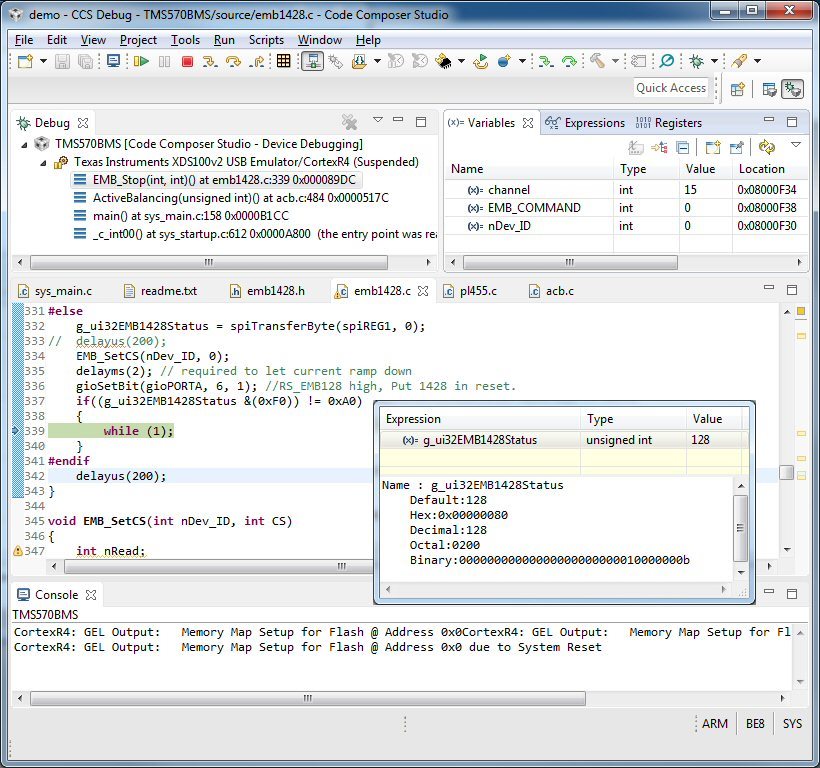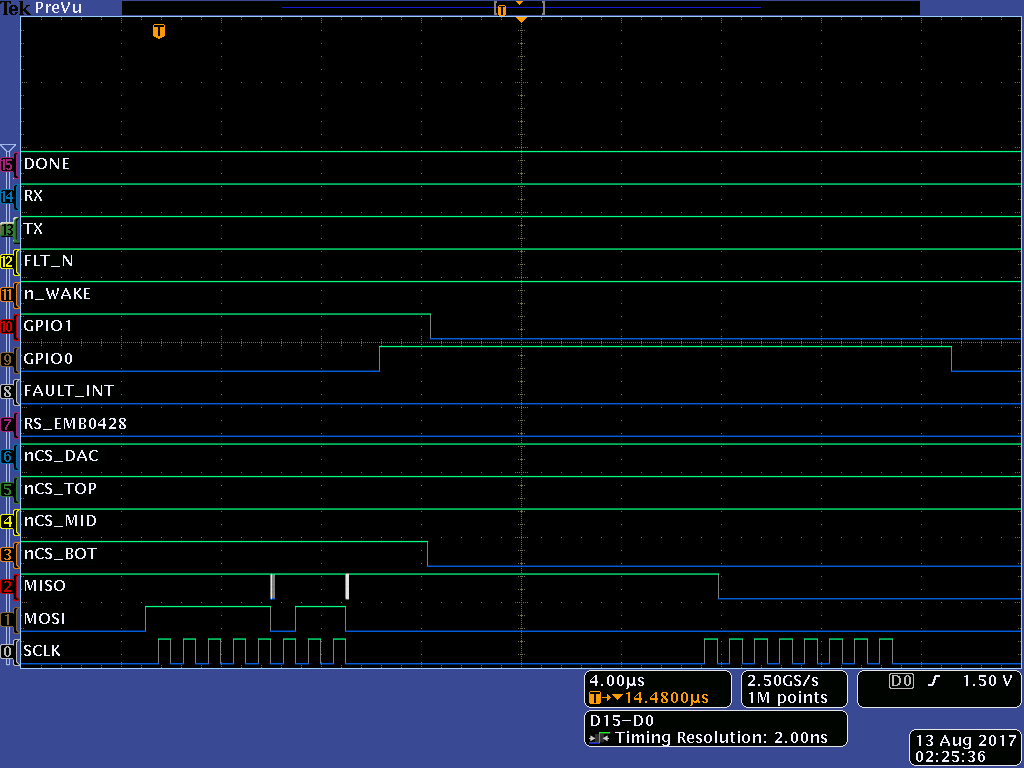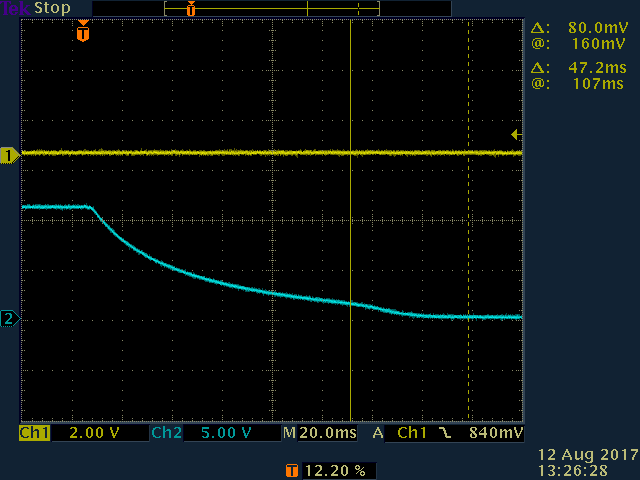Other Parts Discussed in Thread: LAUNCHXL-TMS57004, BQ76PL455A
Hi,
I am having problems getting the active balancing demo to work on my EM1402EVM / LaunchXL-TMS57004 setup.
I am using the demo software tms570bms-1.0 and tms570bmsgui-1.0 downloaded from here: www.ti.com/.../tidcbz0
I modified the LaunchXL-TMS57004 board as detailed in the application note (tidubi0.pdf) by removing R8/R9 and connecting the signals to J4.1/J4.2.
I compiled the code in Code Composer Studio and then run it in debug. When I enable balancing via the gui app, I notice that the TMS570 code hangs in an infinite while(1) loop in file emb1428.c line 339.
As this is associated with the SPI, I tried commenting out the "#define TMS570SPI" in file emb1428.h, which appears to then make it run SPI in emulated mode. I am unsure which it should be or if it matters.
In this mode, the code does not hang and the balancing appears to be partly working in that there appears a slight dip in the voltages read from the cells for 1 second in every 4, which coincides with the LED D4 flashing on the EM1402EVM.
The problem seems to be that the lower voltage cell in not receiving any charge at those times.
My setup is 16 off 18650 Li-ion cells in series (1p16s) and 3 more in series acting as the separate 12v battery.
Does anyone have any suggestions as to where I should be looking to solve this? I would like to have the demo working as expected before moving on to doing my own customisations.




